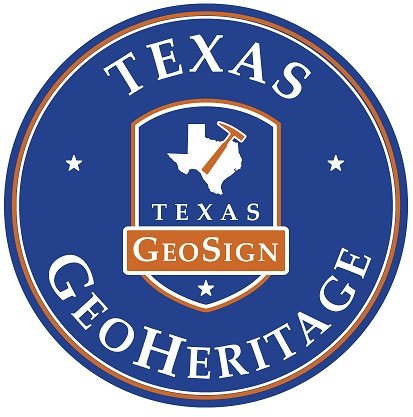ABSTRACT
The Lower Cretaceous Hensel Sandstone and Glen Rose Formation are lateral facies of the transgressive clastic/carbonate leg of the Trinity Division (or Group), whose stratigraphy in the area of the Llano Uplift is here mapped and characterized as a single depositional episode. The Hensel Formation represents alluvial fan, fluvial, and coastal-plain depositional settings, whereas mixed terrigenous and carbonate sediments of the overlying Glen Rose Formation represent peritidal and shallow-marine environments of deposition.
The Hensel-Glen Rose stratigraphic couplet (hence H-GR) thickens from the Llano Uplift eastward toward the Gulf of Mexico and southward toward the Rio Grande embayment. The Glen Rose lithosome thins northward to zero across the southern and eastern margins of the Llano Uplift, primarily by facies change into Hensel arkosic clastics. Reciprocally, the Hensel lithosome thins eastward and southward by grading into Glen Rose strata, so that only thin terrigenous Hensel sandstones and mudstones are present at the base of the downdip H-GR.
At the start of H-GR deposition, the Llano Uplift was a hilly promontory projecting southeastward into the Late Aptian Gulf of Mexico and Rio Grande Embayment. Within the Uplift, the H-GR consists of poorly consolidated arkosic conglomerates, sandstones and mudstones. Its thickness varies widely due to the paleotopography of the underlying Wichita Paleoplain (hence WPP). The H-GR is thin or absent over high-standing Lower Paleozoic fault-blocks, and thick over low-standing Precambrian terranes and “mini-basins.” Hensel Sandstone thickness and configuration of the underlying WPP are mapped throughout the Llano Uplift based on such observed patterns around its margins.
The east-flowing precursor Llano River was the primary stream draining the interior of the promontory. The eastward course of the present Llano River coincides closely with its WPP valley, even though the WPP landscape had been completely filled-in and covered by the time of early Edwards deposition. The south-flowing Kimble valley drained the southwestern quadrant of the Llano Uplift, generating thick deposits of Hensel terrigenous clastics.
BIOGRAPHY
Peter R. Rose (BS, MA, PhD, Geology, University of Texas at Austin) is a certified petroleum geologist who was Staff Geologist with Shell Oil Company; Chief, Oil and Gas Branch of the U.S. Geological Survey; and Chief Geologist and Director of Frontier Exploration for Energy Reserves Group, Inc. (now BHP Petroleum (Americas), Inc.). In 1980, he established his own independent oil and gas consulting firm, Telegraph Exploration, Inc. His clients include most major U.S. companies and many prominent independents as well as many international firms and state oil companies. Dr. Rose has explored for oil and gas in most North American geological provinces and has published and lectured widely on U.S. resource assessment, basin analysis, play development, prospect evaluation, and risk and uncertainty in exploration. He has taught extensively at the professional level and was a 1985/1986 AAPG Distinguished Lecturer. Since 1989 he has been deeply involved in design and implementation of comprehensive exploration risk analysis systems for executive management of many major and independent oil companies, operating in both the Domestic and International theaters. His courses emphasize the link between geoscience and making money in the business of petroleum exploration. He is a Senior Associate in the consulting firm, Rose & Associates, LLP (R&A), which he founded in 2000. The firm is a recognized international leader in risk analysis of exploration and development petroleum ventures. Dr. Rose was the 1996/1997 President of the American Association of Petroleum Geologist’s Division of Professional Affairs. He received the coveted Parker Memorial Medal from the American Institute of Professional Geologists in 1998 and was awarded Honorary Membership in AAPG in 2002. He served as President of the AAPG beginning in July 2005. In 2013 he became the first American recipient of the prestigious Petroleum Group Medal of the Geological Society of London, and in 2014 AAPG honored him with its Halbouty Outstanding Leadership Award.


































